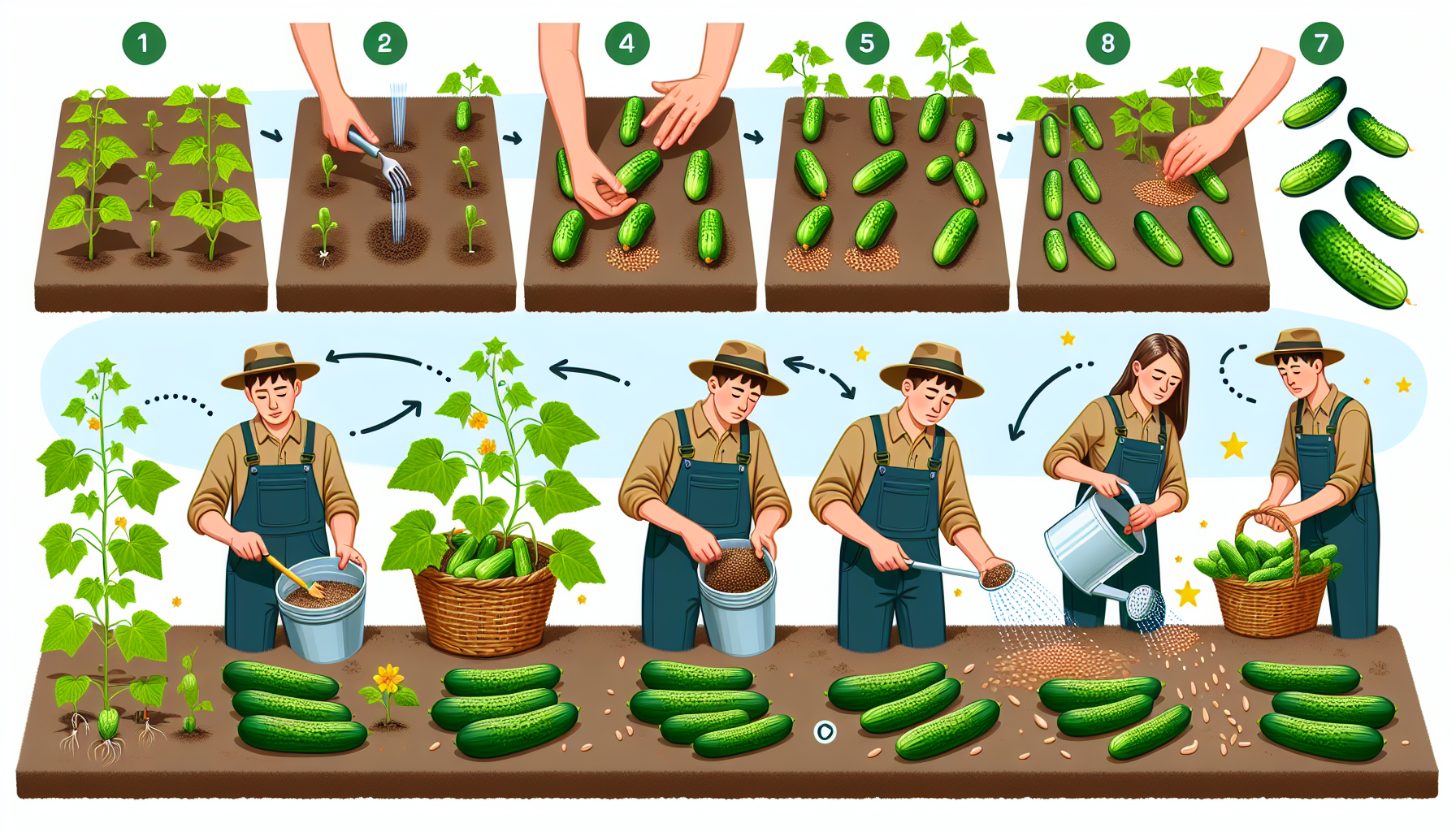
how do i plant cucumber
How Do I Plant Cucumber? A Beginner's Guide to Growing Cucumbers
Are you ready to grow your own fresh, crisp cucumbers? Whether you're a seasoned gardener or a complete beginner, cucumbers are a fantastic addition to any home garden. They're easy to grow, highly productive, and perfect for salads, pickles, or just eating fresh. In this guide, we'll walk you through everything you need to know about planting cucumbers, from choosing the right variety to harvesting your first crop.
1. Choose the Right Variety
Before planting cucumbers, decide which type you'd like to grow. There are two main categories of cucumbers:
- Slicing cucumbers: These are larger and perfect for eating fresh or in salads.
- Pickling cucumbers: These are smaller and ideal for making pickles.
Some popular varieties include Marketmore, Boston Pickling, and Armenian. Choose a variety that suits your growing conditions and intended use.
2. Prepare the Soil
Cucumbers thrive in well-drained, fertile soil with a pH between 6.0 and 7.0. Follow these steps to prepare your garden bed:
- Choose a sunny location, as cucumbers need at least 6–8 hours of sunlight daily.
- Amend the soil with compost or well-rotted manure to improve fertility and drainage.
- Test your soil to ensure the pH is within the ideal range. If needed, adjust with lime or sulfur.
3. Plant Your Cucumber Seeds or Seedlings
You can grow cucumbers from seeds or seedlings. Here's how:
Direct Sowing:
- Wait until the soil temperature is at least 60°F (15°C), typically 2 weeks after the last frost.
- Plant seeds about 1 inch deep and 12–18 inches apart in rows spaced 3 feet apart.
- Water the seeds lightly after planting.
Transplanting Seedlings:
- Start seeds indoors 3–4 weeks before your last frost date.
- Harden off the seedlings by gradually exposing them to outdoor conditions for a week before planting.
- Plant them in the garden, ensuring they are spaced 12–18 inches apart.
4. Water and Fertilize Regularly
Cucumbers need consistent watering to produce juicy fruits. Follow these tips:
- Water deeply once or twice a week, ensuring the soil stays moist but not waterlogged.
- Avoid overhead watering to prevent fungal diseases. Use drip irrigation or water at the base of the plants.
Fertilize cucumbers every 2–3 weeks with a balanced fertilizer or compost tea. Avoid over-fertilizing with nitrogen, as this can lead to lots of leaves but fewer fruits.
5. Train and Support Your Plants
Cucumbers grow as vines and benefit from trellising. A trellis not only saves space but also improves air circulation and makes harvesting easier. Guide the vines onto the trellis as they grow.
6. Monitor for Pests and Diseases
Common cucumber pests include cucumber beetles and aphids. Use row covers to protect young plants and remove any pests you see. Watch out for diseases like powdery mildew and downy mildew, and ensure proper spacing and air circulation to reduce risk.
7. Harvest Your Cucumbers
Harvest cucumbers when they reach the desired size for their variety. Regular harvesting encourages the plant to produce more fruits. Use a sharp knife or scissors to cut the cucumbers from the vine, leaving a short stem attached.
For slicing cucumbers, pick them when they’re 6–8 inches long. For pickling cucumbers, harvest them when they’re 2–4 inches long.
Conclusion
Growing cucumbers is a rewarding experience that provides a bountiful harvest with minimal effort. By following these steps, you'll be well on your way to enjoying homegrown cucumbers straight from your garden. Ready to start planting? Grab your seeds and get growing!
For more gardening tips and advice, check out our Gardening Tips section. Happy planting!